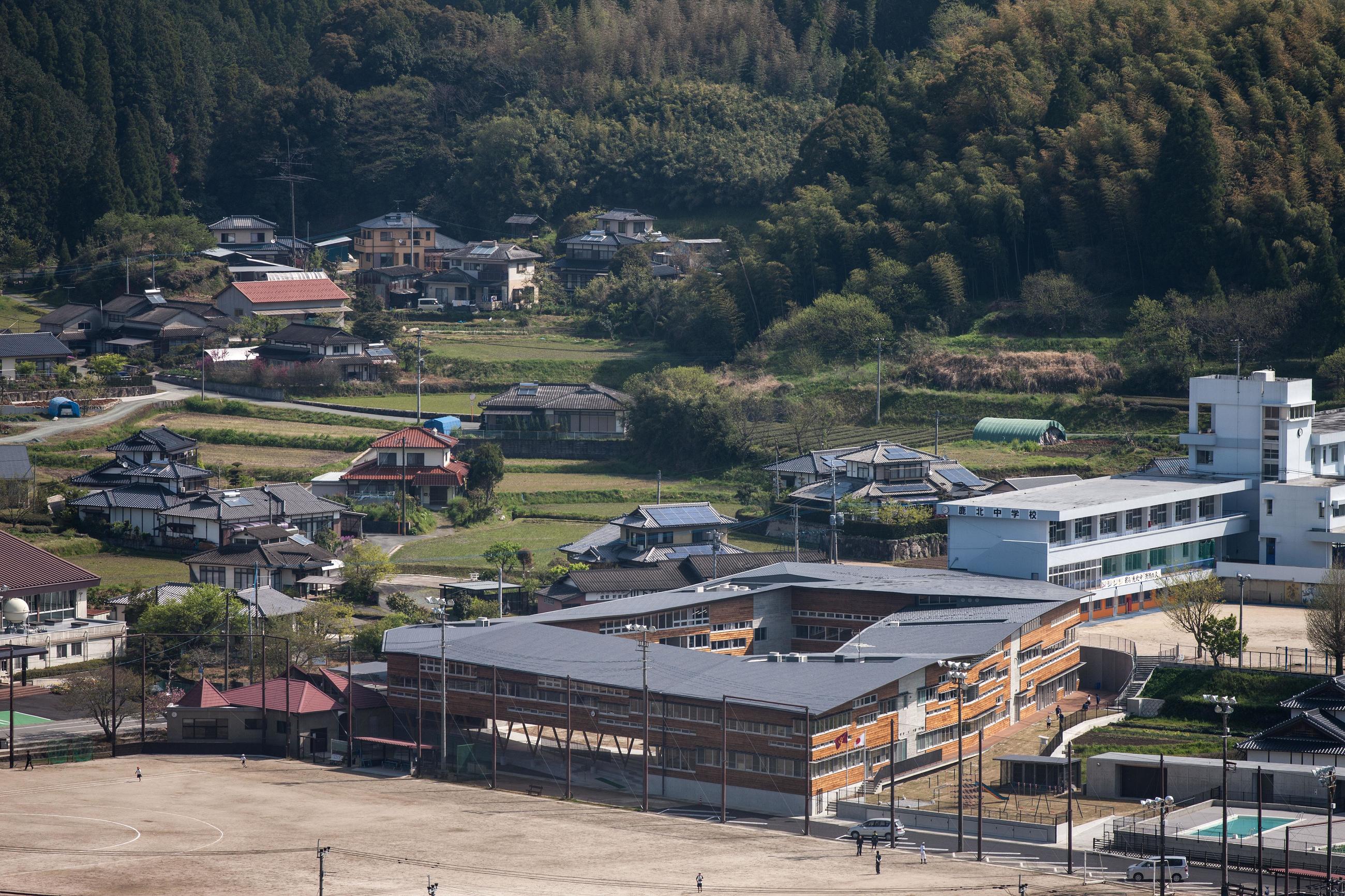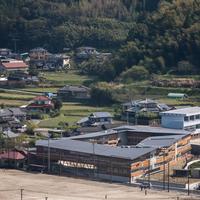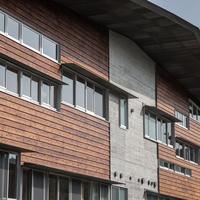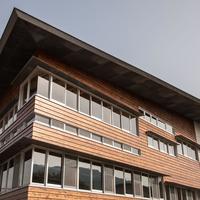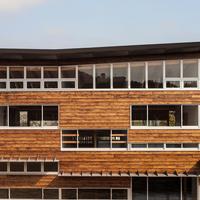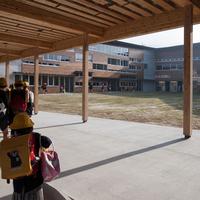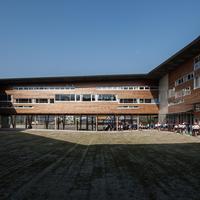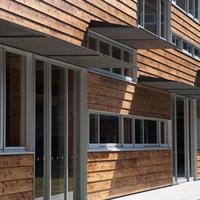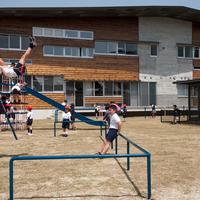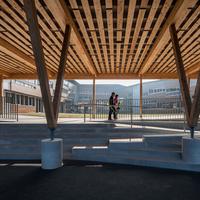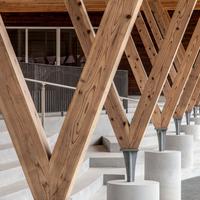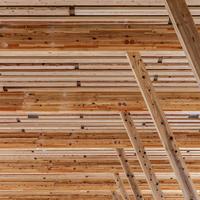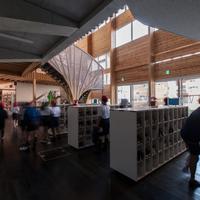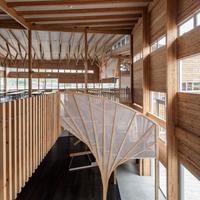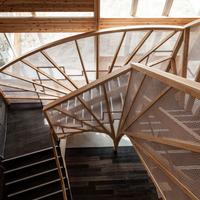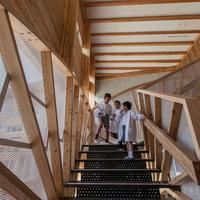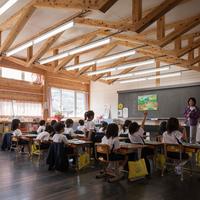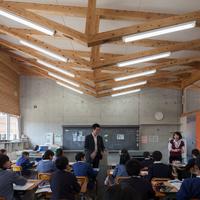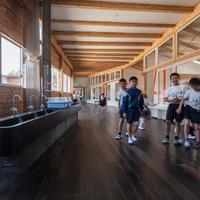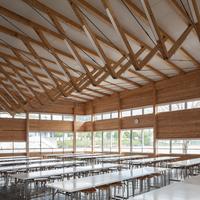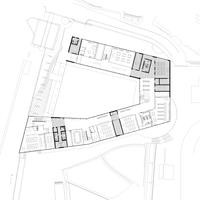Kahoku Elementary School
1469-1 Kahoku, Yamaga, Kumamoto, JAPAN
Primary school built by carpenters with local cedar processed at a local sawmill
| Architect | Nobuaki Furuya + NASCA + Nakagawa Architect’s Office |
|---|---|
| Usage | Elementary School |
| Structure | RC+W |
| Size | 2F |
| Site area | 7,132m2 |
| Area | 3,927m2 |
| Completion | 2013.03 |
| Award | First Prize, Open Design Competition for Kahoku Elementary School, 2010; Architectural Institute of Japan (AIJ) Award 2015 |
This new elementary school was built after three elementary schools in the northern part of Kumamoto had been merged. It was also the fruit of studies on elementary schools built of wood, which Professor Masahiro Inayama of Tokyo University and I had been working on together since 2007. This time, we made use of timber, including cedar wood, grown in that area. Our choice of cedar wood enabled local constructors to build the school. The wooden buildings are separated into two, sandwiching a core, made of concrete, between them. As concrete parts can withstand earthquakes, the wooden walls were not constructed to be earthquake-resistant. As there were no crossbeams on the wooden walls, we could make rectangular openings wherever we liked. As for the windows, we changed their positions and heights depending on the direction of the rooms and how they are used. In the classrooms and along the corridor adjacent to the classrooms, we arranged cedar panels, which were cut 90 by 90 centimeters square, in lines in order to keep the rooms warm and to control humidity. They can also be used as the low tables, on which the students make their works of art and display them. We installed insulation in the outer walls and, as with the inside of the building, boarded the lower sections of the walls with cedar wood.
We also constructed a triangular school building, which has a courtyard, on the slanted lot next to the junior high school and the area of ground used by local residents. In this building, the students can move freely around the first floor as it has an open plan. We placed the classrooms for the students in the lower grades on the ground floor facing the southern court. The kitchen and lunch room were located on the eastern side of the first floor, which is connected to the junior high school. The staircase was modeled on the shape of trees. I wanted to design it as an impressive object. The reason that the roof is irregularly curved is to express harmony with the surrounding mountain-scape. There is a corridor supported by V-shaped pillars on the ground floor. This space is used not only as an entrance to the school building but as a seating area, a shaded resting place, or a place to shelter from the rain.
Photos: Asakawa Satoshi
